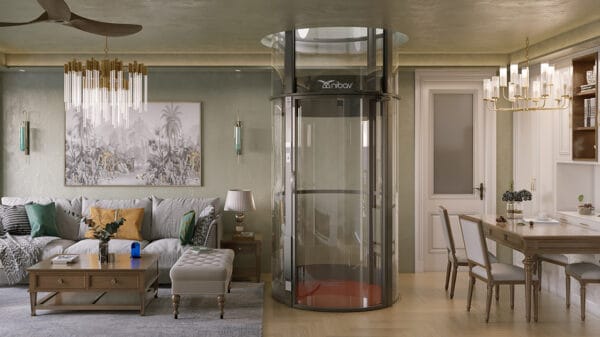For any business, a website can be a potent tool to attract customers and generate business. As the internet has become more competitive over the years, it has become more difficult to not only drive traffic to your website but to convert visitors into customers. Today’s internet user has a tremendous number of websites, products, services and companies to choose from, so they can afford to be picky and generally are benefited by taking the time to do so.
If your website is not producing the results you want, quite often it is due to your site offering a poor user experience. One of the best ways to stand out is by offering a great user experience and because of this, the usability of your website is more important than ever before.
You cannot rely on today’s web users to ignore a site that is difficult to use or loads slow on their journey to buy your product or service or communicate with you. If they find your site slow or difficult to use, they will simply go somewhere else to make their purchase. The service you offer is a key part of your brand and in the modern world, a key component of service is offering an intuitive, easy-to-use web experience to your website visitors. Simply put, if your site is lacking when it comes to usability, no one will spend enough time on it to become a customer.
There are some common, simple mistakes that can be fixed to improve your web site’s user experience and improve the conversation rates.
Pay Attention to Page Speed
According to Kissmetrics, 47% of consumers surveyed expected a web page to load in 2 seconds or less and 40% of people will abandon a website that takes more than 3 seconds to load. To make matters worse, 79% of web shoppers who had trouble with a web site’s performance said they wouldn’t return that site again. If you have a slow loading website, potential sales are being missed.
Fortunately, abandonment rates can be reduced right off the bat by making sure your website loads quickly. Don’t think it doesn’t matter because if your page load speed is less than optimal you are losing customers.
There are several ways to improve your web site’s speed. Start by cleaning up your site’s code. Clean code is essential on today’s internet. Next, resize and compress images, good image management can make a big difference in a site’s speed. Don’t use HTML to resize your images, do it in a graphics program.
Next, remove unnecessary plugins. Generally these plugins are hurting you in two ways; first, they are most likely not having the positive impact that you think they are as site visitors often see plugins as clutter getting in the way of their web experience. Second, they will slow down your page load times.
Finally, opt for a minimalist style for your website to ensure it is fast loading. Not only will a minimalist style help improve the speed of your site but by having less clutter you will improve your site’s conversions.
Maintain Consistency
A web design has to maintain consistency in order to create a smooth, positive user experience. Website consistency involves utilizing matching color schemes that remain consistent throughout the entire website, additionally, you will want to maintain consistency with other items on your website, including having your text being in a matching font, button styles remaining similar from page to page, and even smaller items that you may overlook, such as keeping your spacing consistent, etc.
Consider the impression it makes if the headline on one page is in Arial font and in the next, it is in Georgia font, perhaps in a slightly different color. Not only do you run the risk of the site visitor being confused, but it creates a poor impression of your site and business that does not build trust. Inconsistency on a site design gives the user the impression your site was designed by an amateur and does not help create a feeling of confidence in your website and brand. If you want to convert visitors to customers, it is crucial to keep the styles, layout, fonts and other design elements consistent throughout your website.
Utilize White Space
It is important to keep in mind that white space is a crucial part of good design. Not only does white space make your content easier to read but it also allows the site visitor to focus on the text without being distracted by other elements. In a study performed by Crazy Egg, they found that white space around text and headlines improved user comprehension by 20%. White space allows your visitors to feel a sense of clarity while being able to focus their attention on your content.
Beyond improving comprehension, white space will help your website look more modern. Most savvy designers have been taking advantage of white space so modern web designs tend to feature it. Web sites without it can feel cluttered, dated or even worse, amateur. You will want to make sure you strike a balance between having white space and not forcing visitors to engage in a great deal of scrolling. Find a happy medium where you can showcase your information in an easy to read format while at the same time giving visitors the convenience of not having to scroll too much.
Have Your Calls to Action Standout
While this may seem like a basic marketing principle to many, it is surprising how often businesses forget this simple principle. Make it easy for your site visitors to do something. You do not want visitors browsing your site and not guiding them somewhere. Your site’s pages must have obvious and compelling calls to action to prompt visitors. Utilize strong calls to action to drive sales, newsletter sign-ups, etc.
Make sure your calls to action don’t get lost in your design; you want them to stand out from the rest of the content. Use a color that gets users’ attention and makes sure you leave plenty of white space around your call to action to minimize distractions.
Don’t Forget Visual Appeal
The visual appeal of your site can not only help grab a visitor’s attention but it can help build trust and improve retention. According to Google, it takes only 0.05 seconds for a user to form an opinion about your website and decide whether they like your site or not. This opinion often determines whether they stay or leave.
According to Google’s research, web designs that are simple and familiar outperform unconventional layouts. Your goal should be to create a clean site with a familiar layout that is attractive to the eye.
In tests, visual design is the aspect that most impacts a user’s first impressions of your site. At the Conference on Human Factors in Computing Systems, British researchers shared results of their study finding that 94% of the first impression of a website was about its design. It is important that you help users form a positive first impression. Include visually appealing images as a tool for getting people to stay longer on your website.
Keep in mind that in a study by the Journal of Travel Research, usability was the second most important factor when it comes to first impression formation. Usability was followed by credibility. So while you want to create a site with the great visual appeal you never want to let that get in the way of usability. Your goal should be to create visual appeal within a framework of a great user experience. Make decisions that build trust with your client base.
Samella Garcia works as an Integration Manager for Vanity Point. She has 8 years of experience developing mobile applications and web sites that focus on UX. Samella has a passion for user experience projects, coding, digital technology and hiking. LinkedIn Profile | Facebook Profile






















































































































































































